Production enhanced through varied species selection
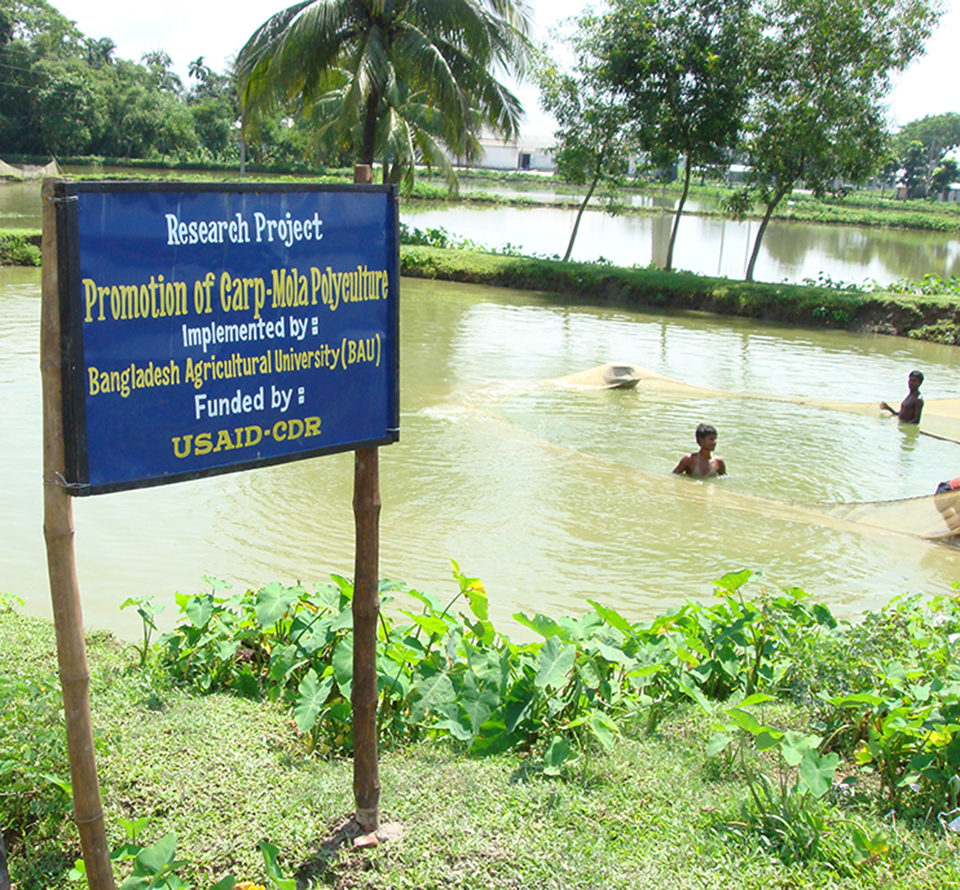
Polyculture of Indian major carp is a traditional practice in Bangladesh. Under a grant from the U.S.-Israel Cooperative Development Research Program, the authors recently carried out an optimization of a sustainable semi-intensive pond aquaculture technology including major carp species as a “cash crop” and small indigenous fish species (SIS) as food for the farmers’ families.
Procedures
The optimization was achieved through manipulations of the fish species combinations stocked, considering the ecological effects produced by bottom feeders on the pond bottom and filter feeders in the water column. Initially, the optimization of the “cash-SIS” technology was directed to affect the pond bottoms through bottom-feeding fish.
In a second step, the work concentrated on changes to the water column through the addition of silver carp. The carp have potential ecological and socioeconomic advantages and were expected to have a strong impact on the pond ecology. The fast-growing fish are very efficient filter feeders that can add to farmers’ family nutrition because they are a relatively cheap fish that families can afford to eat instead of sell.
As a third step, to test the effects on fish production of these changes and at the same time to disseminate the knowledge of the cash-SIS technology, an experiment was conducted with the participation of farmers guided by the Bangladesh Agricultural University partners.
Experimental treatments
The study was performed simultaneously in 64 farmers’ fish ponds in four distant ecological regions of Bangladesh. In each region, each experiment involved four treatments with four replicates per treatment. The control polyculture was the traditional stocking of 33 rohu, 33 catla and 34 common carp per 100 m2, with the addition of 250 mola and three silver carp per 100 m2. In previous experiments, this silver carp addition was found to have no additional effects on the other fish or on the environment.
Water column treatment was achieved by changing the density of the herbivorous fish (reducing catla density to 24/100 m2 and increasing silver carp to 12/100 m2). For the bottom treatment, the benthophagous fish were adjusted (replacing 10/100 m2 common carp by mrigal). Both approaches were simultaneously carried out in a combined treatment.
Fish effects on environment
Each of the fish species stocked affects the environment in a somewhat different way, largely depending on size and feeding regime (Figure 1). Filter feeders consume plankton and suspended particles (including added feed), but catla prefer zooplankton that collect in the upper water layers. Rohu, mola and silver carp prefer phytoplankton.
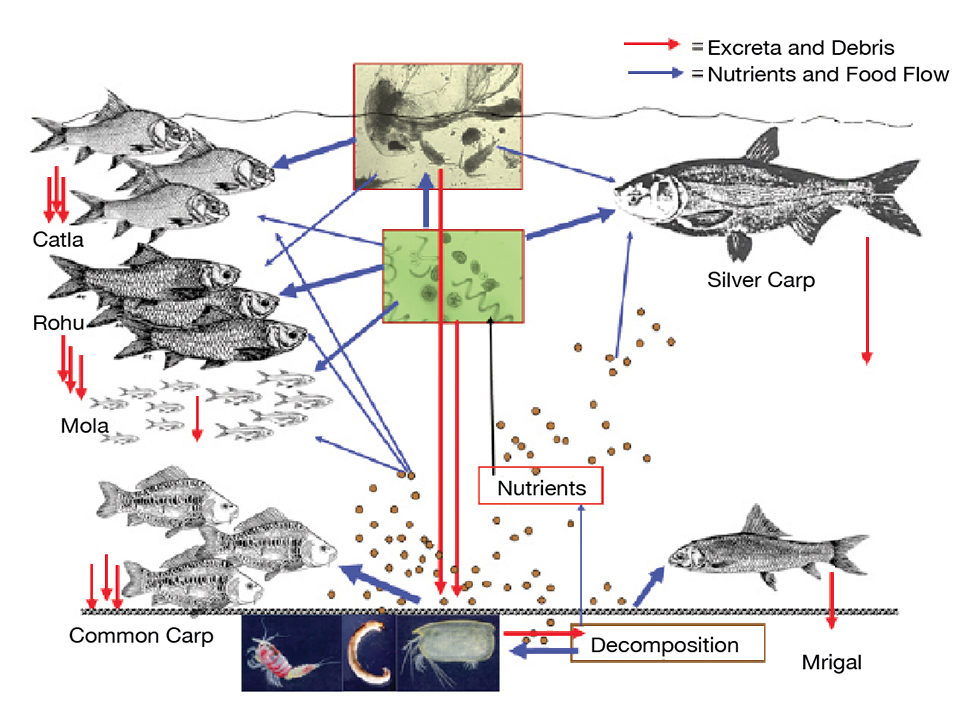
Silver carp are fast-growing and very efficient filter feeders. While mola are a small fish that may reach only several grams, rohu and catla can reach several hundred grams, and silver carp over a kilogram in one culture cycle.
Particles originating in all ecosystem components gradually settle onto the bottom and provide food for benthic organisms. Mrigal are mainly bottom feeders that feed on detritus, plants and zooplankton, but they also migrate throughout the water column to feed in shallow areas. Common carp search for organisms on the bottom, and while doing so stir up sediments and bring nutrients back into the water, enhancing phytoplankton production. Mrigal produce weaker disruptions to pond bottoms than common carp do when feeding.
Species shifts
In the water column treatment, catla density was reduced, and silver carp density was increased, keeping the same total herbivorous fish density. The greater density of the large silver carp increased grazing pressure on phytoplankton, which increased water transparency. However, the increased grazing pressure was not enough to reduce the food resources of rohu and mola in the water column or of common carp on the bottom. Their performances were not affected.
This species shifts led to increased inter- and intraspecific competition between catla and silver carp that attained smaller sizes and lower growth rates than in the control treatment. The combined effects in the water column treatment led to 15 percent increases in herbivorous and total yields (Figure 2), and a 17 percent reduction in feed-conversion ratio (FCR). Together, these resulted in a 25 percent increase in total income in relation to that for the control treatment (Figure 3).
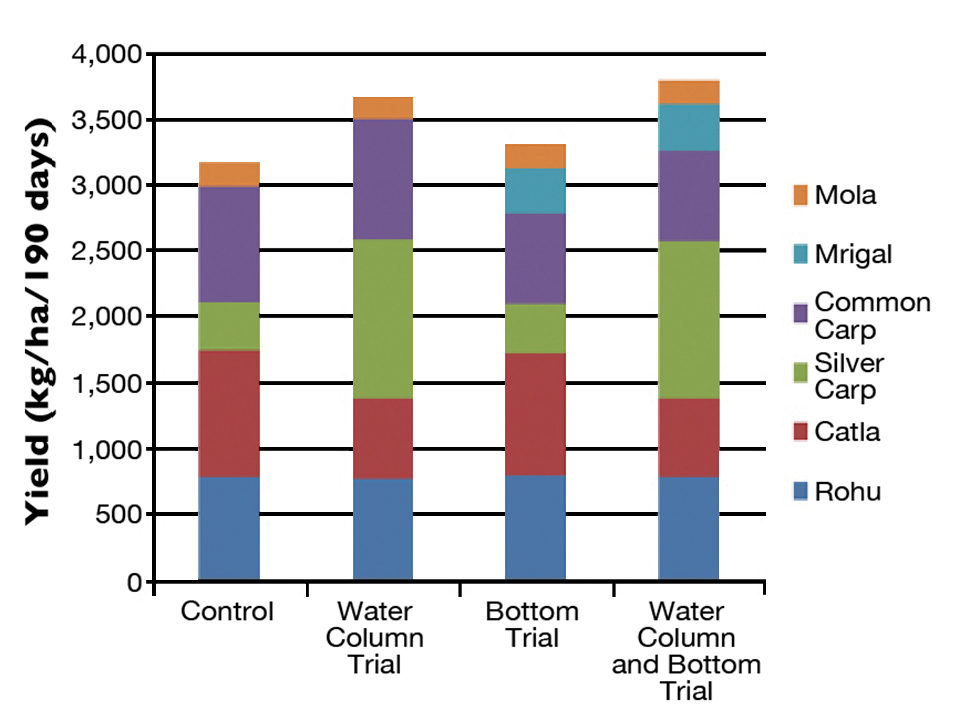
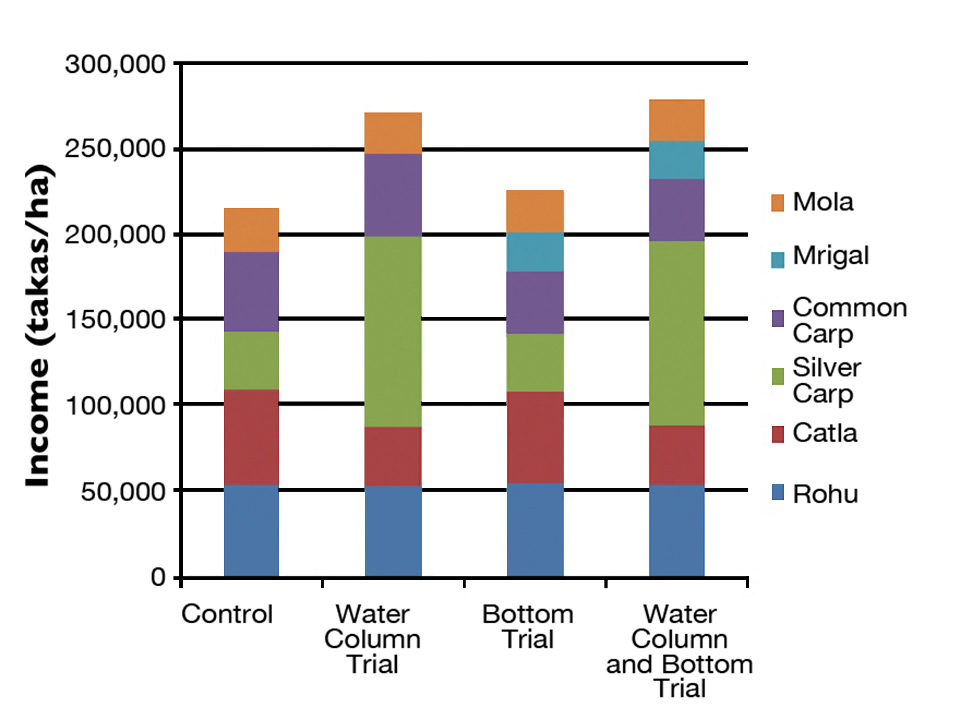
Bottom treatment
In the bottom treatment, common carp density was reduced by 30 percent, and mrigal were stocked instead to keep the same total bottom feeder fish density. The reduction in bottom disruption due to the lower “stirring” action of the mrigal was not enough to decrease food resources for the herbivorous fish, which performed as in the control treatment. The lower common carp density reduced intraspecific competition and improved growth rates for the fish.
Thus, although the fewer common carp resulted in lesser yield, the carp and mrigal together led to a 20 percent higher yield and 25 percent higher income from bottom feeders (Figures 2, 3). However, the total yield increased only by 4 percent, since bottom feeders contributed less than a third to the total fish biomass in the pond. There was no improvement of total income in relation to the control treatment.
Yields, income
In both experiments, there were effects due to the increase of silver carp and effects due to the replacement of some common carp by mrigal. The higher grazing pressure that resulted from the increased amount of silver carp increased water transparency, silver carp intraspecific competition and interspecific competition between silver carp and catla. It did not affect the rohu and mola.
The reduced amount of common carp reduced their intraspecific competition and improved growth rates. The combined effects in the experiments led to a 20 percent increase in herbivorous bottom feeders and total yield, and a 20 percent reduction in FCR, which together resulted in a 30 percent increase in total income in relation to the control treatment.
Despite the general homogeny of the Bangladesh landscape, the experimental results showed some differences among regions. The earlier start of the warm monsoon season in the southwest leads to somewhat higher water temperatures for longer periods, which resulted in higher fish yields in Magura.
The control polyculture gave good production in all the regions, with a 15 percent difference between the highest and lowest average yields. The increased yields produced in the experiments were stronger in the western regions than in the eastern ones.
Perspectives
Performing the same experiments in four distant regions of the country not only confirmed the effects of the stocking of different fish, but also accelerated the dissemination of the cash-SIS technology throughout the country.
The manipulations of species combinations did not affect the small mola, which reproduced and yielded equally well in all regions. This allowed a continuous mola supply for the farmers’ families for consumption throughout the culture season and an option to consume or sell the larger mola amounts gathered at final harvest.
(Editor’s Note: This article was originally published in the May/June 2012 print edition of the Global Aquaculture Advocate.)
Now that you've reached the end of the article ...
… please consider supporting GSA’s mission to advance responsible seafood practices through education, advocacy and third-party assurances. The Advocate aims to document the evolution of responsible seafood practices and share the expansive knowledge of our vast network of contributors.
By becoming a Global Seafood Alliance member, you’re ensuring that all of the pre-competitive work we do through member benefits, resources and events can continue. Individual membership costs just $50 a year.
Not a GSA member? Join us.
Authors
-
Dr. A. Milstein
Fish and Aquaculture Research Station
Dor, M. P. Hof Ha
Carmel 30820 Israel[108,105,46,118,111,103,46,105,114,103,97,64,110,105,101,116,115,108,105,109,97,110,97]
-
Dr. M. A. Wahab
Department of Fisheries Management
Bangladesh Agricultural University
Mymensingh, Bangladesh -
Dr. A. Kadir
Department of Fisheries
C. M. Ali Sarani
Kakrail, Dhaka, Bangladesh -
M. Kunda, M.S.
Department of Fisheries
C. M. Ali Sarani
Kakrail, Dhaka, Bangladesh
Tagged With
Related Posts

Responsibility
A look at integrated multi-trophic aquaculture
In integrated multi-trophic aquaculture, farmers combine the cultivation of fed species such as finfish or shrimp with extractive seaweeds, aquatic plants and shellfish and other invertebrates that recapture organic and inorganic particulate nutrients for their growth.
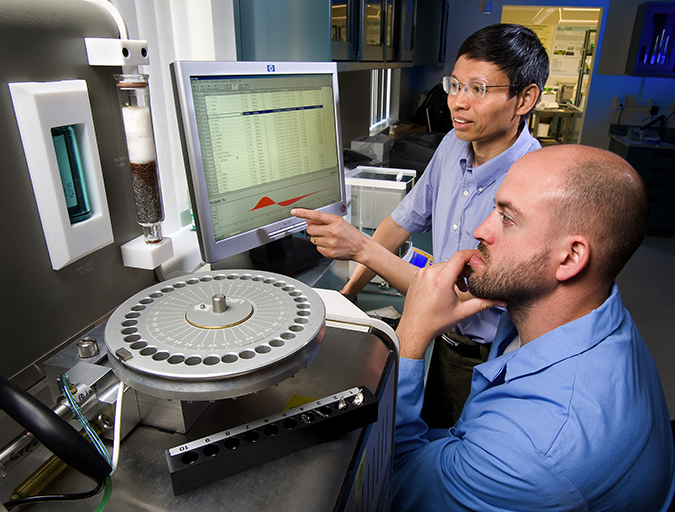
Aquafeeds
Alternative feed ingredient universe to convene at F3 meeting
What started out as a simple yet ambitious contest to drive innovation in the aquafeed sector has evolved into a fully global competition – and collaboration – amongst ingredient suppliers and feed manufacturers.
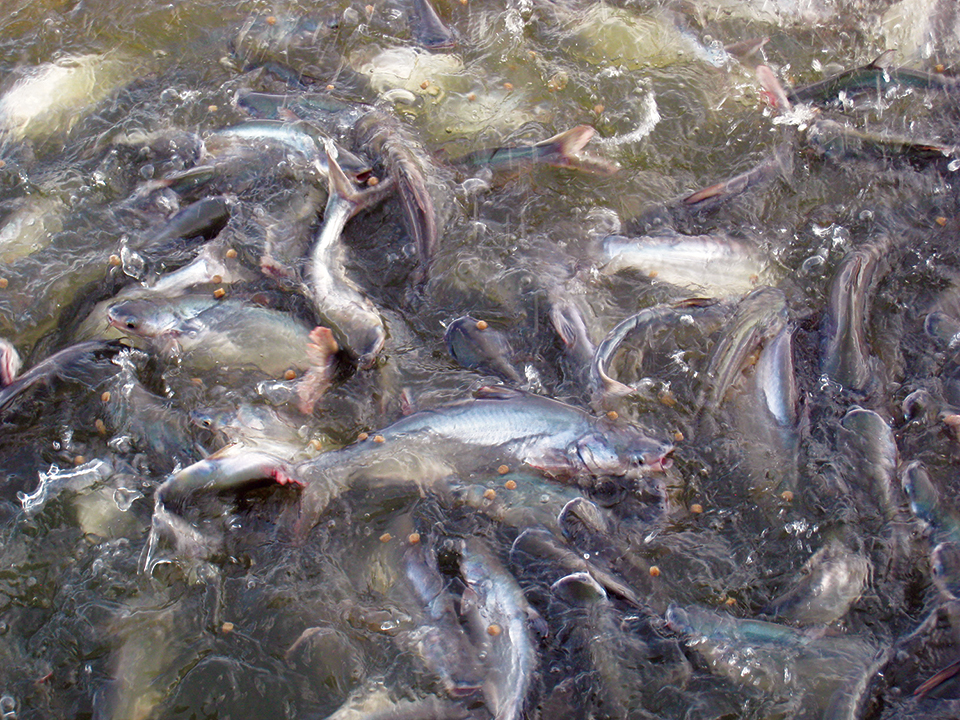
Health & Welfare
Amino acid supplementation reduces protein levels in pangasius diets
Trials show that supplementation with amino acids could reduce protein levels from a typical 28 percent to 23 percent in pangasius diets.
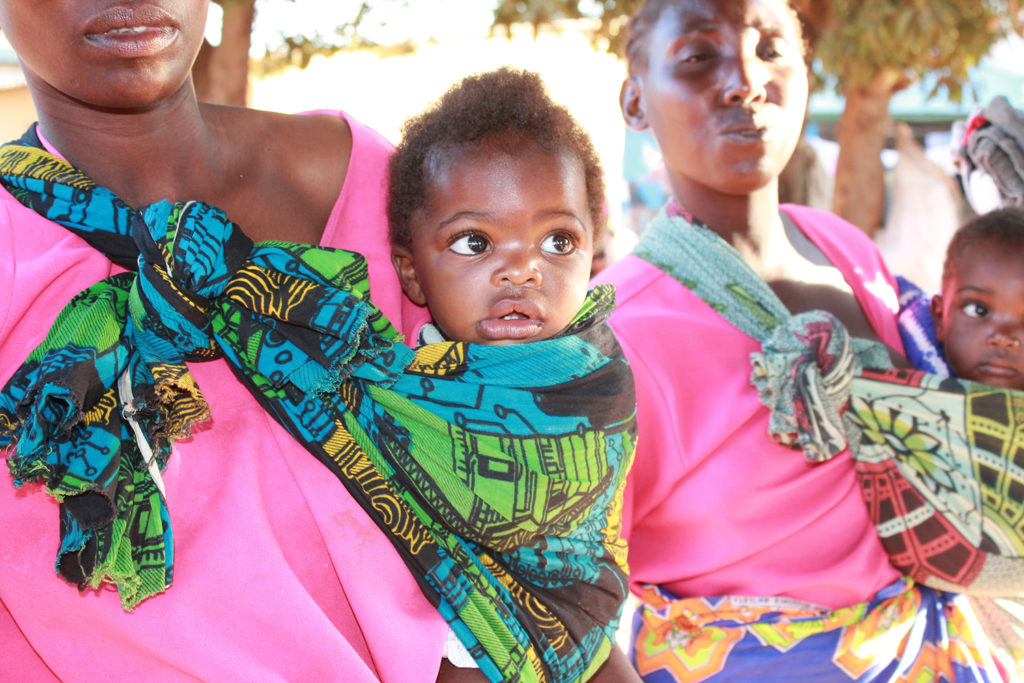
Responsibility
An African prison where fish will be farmed and lives saved
A nonprofit organization working to improve conditions in African prisons is hoping tilapia ponds, tended to by inmates, will aid in their nutrition. A small donation from the Global Aquaculture Alliance will go a long way.



